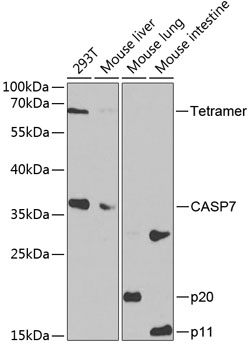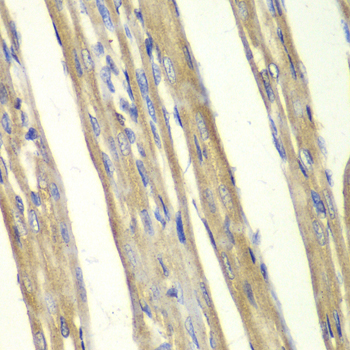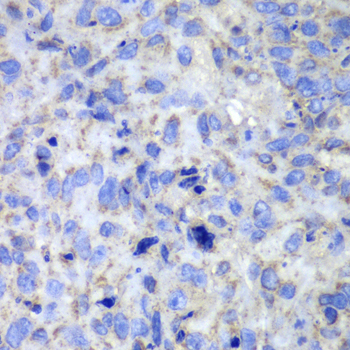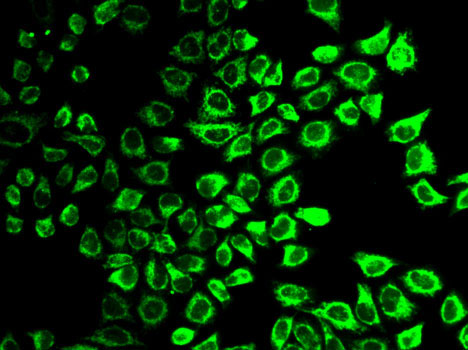-
Product Name
Casp7 Polyclonal Antibody
- Documents
-
Description
Polyclonal antibody to Casp7
-
Tested applications
WB, IHC, IF
-
Species reactivity
Human, Mouse, Rat
-
Alternative names
CASP7 antibody; CASP-7 antibody; CMH-1 antibody; ICE-LAP3 antibody; LICE2 antibody; MCH3 antibody; caspase-7 antibody
-
Isotype
Rabbit IgG
-
Preparation
Antigen: Recombinant fusion protein containing a sequence corresponding to amino acids 24-303 of human Casp7 (NP_001218.1).
-
Clonality
Polyclonal
-
Formulation
PBS with 0.02% sodium azide, 50% glycerol, pH7.3.
-
Storage instructions
Store at -20℃. Avoid freeze / thaw cycles.
-
Applications
WB 1:500 - 1:2000
IHC 1:50 - 1:200
IF 1:50 - 1:200 -
Validations

Western blot - Casp7 Polyclonal Antibody
Western blot analysis of extracts of various cell lines, using CASP7 antibody at 1:1000 dilution.Secondary antibody: HRP Goat Anti-Rabbit IgG (H+L) at 1:10000 dilution.Lysates/proteins: 25ug per lane.Blocking buffer: 3% nonfat dry milk in TBST.

Immunohistochemistry - Casp7 Polyclonal Antibody
Immunohistochemistry of paraffin-embedded rat heart using CASP7 antibody at dilution of 1:100 (40x lens).

Immunohistochemistry - Casp7 Polyclonal Antibody
Immunohistochemistry of paraffin-embedded human lung cancer using CASP7 antibody at dilution of 1:100 (40x lens).

Immunofluorescence - Casp7 Polyclonal Antibody
Immunofluorescence analysis of HeLa cells using Casp7 antibody .
-
Background
Involved in the activation cascade of caspases responsible for apoptosis execution. Cleaves and activates sterol regulatory element binding proteins (SREBPs). Proteolytically cleaves poly(ADP-ribose) polymerase (PARP) at a '216-Asp-|-Gly-217' bond. Overexpression promotes programmed cell death.
Related Products / Services
Please note: All products are "FOR RESEARCH USE ONLY AND ARE NOT INTENDED FOR DIAGNOSTIC OR THERAPEUTIC USE"
